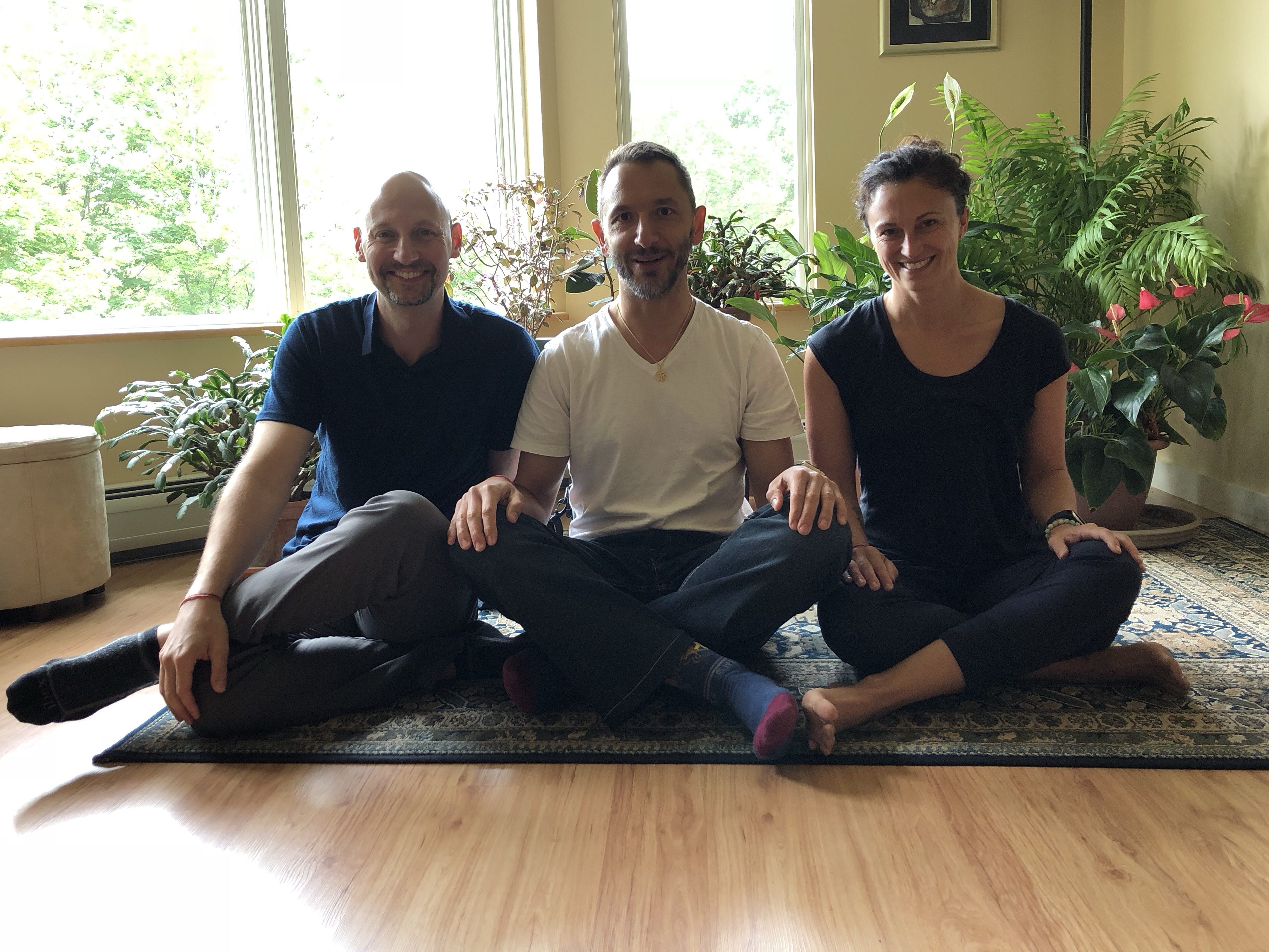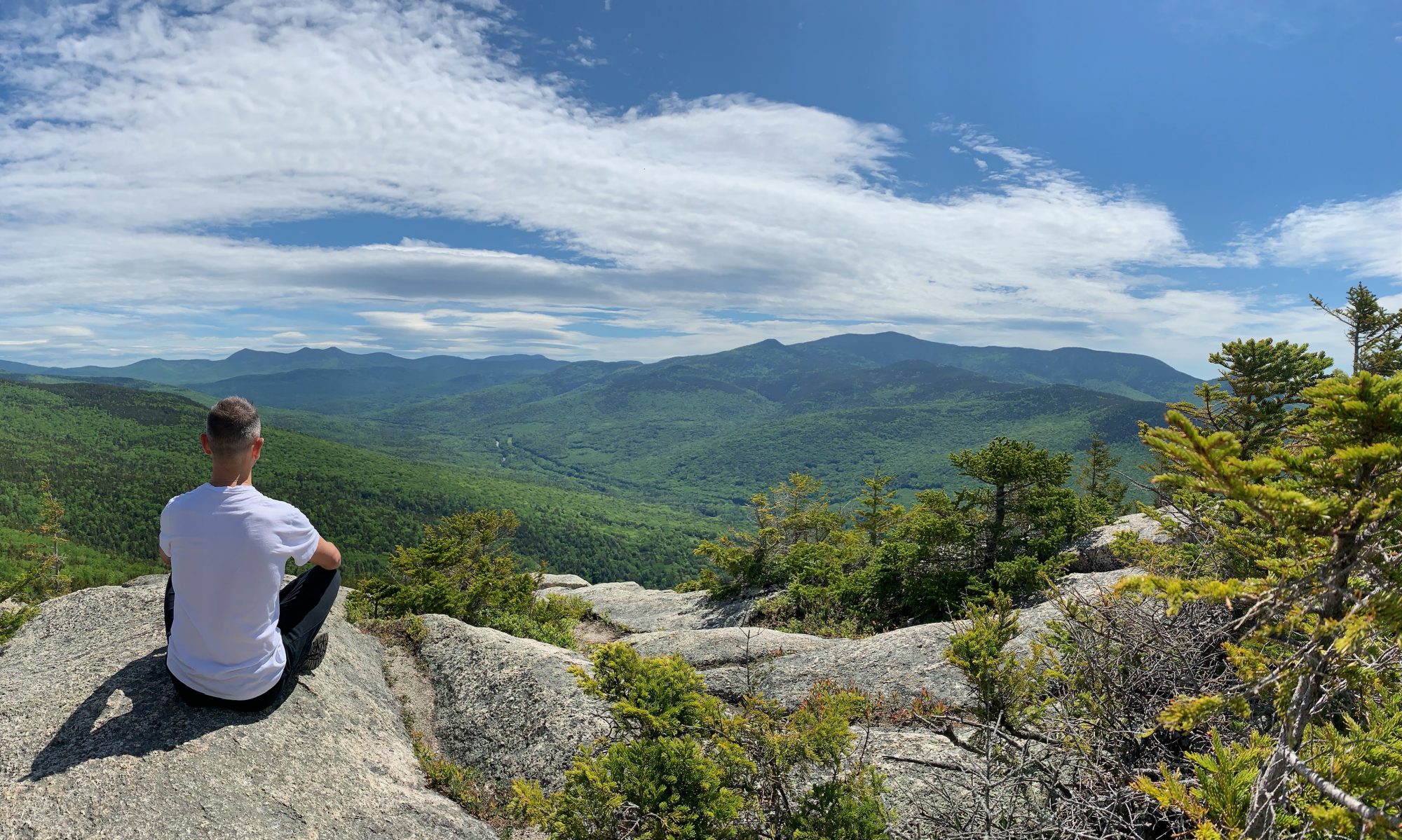While he doesn’t recall exactly when he attended his first yoga class, Peter Nikolaidis is pretty sure it was sometime in the early 2000s.
Maybe the late 90s.
Okay, he really doesn’t remember, but it was a while ago.
In 2011, while unable to continue his usual practice of martial arts due to an injury, he turned to yoga to fill in the gap. Over time, yoga shifted to become more of a central component to his everyday life, alongside self-defense and mountain biking. Today, Peter refers to yoga as “how he puts himself back together after tearing himself apart in his other favorite activities,” which usually consists of a long run while training for his next marathon.
In 2018, after practicing Yin Yoga with Holland Sweeney since 2015, Peter embarked on his RYT 500 certification, completing his 200 hour training with Jenna Palm and 300 hour Teacher Training Certification in Yin Yoga and Meditation with Josh Summers in 2019.
Taking a functional, practical approach to yoga, his classes focus on what works for the individual student. Rather than urging students to pursue flashy, potentially dangerous poses which yield little benefit, he encourages simple poses and sequences that pose little risk and yield high rewards.
Peter teaches at the Corner Studio in Medford, Alpha Krav Maga Malden, at his home studio, and over the Internet.

About Yin Yoga
From Wikipedia:
Yin yoga is a slow-paced style of yoga with postures, or asanas, that are held for longer periods of time—for beginners, it may range from 45 seconds to two minutes; more advanced practitioners may stay in one asana for five minutes or more.
Yin yoga poses apply moderate stress to the connective tissues of the body—the tendons, fascia, and ligaments—with the aim of increasing circulation in the joints and improving flexibility. A more meditative approach to yoga, yin aims at cultivating awareness of inner silence, and bringing to light a universal, interconnecting quality.
Yin yoga’s teaching in the Western world, beginning in the late 1970s, was founded by martial arts expert and Taoist yoga teacher Paulie Zink. Yin yoga is now being taught across North America and in Europe, due in large part to the teaching activities of Yin yoga teachers and developers Paul Grilley and Sarah Powers.Yin yoga as taught by Paul Grilley and Sarah Powers is not intended as a complete practice in itself, but rather as a complement to more active forms of yoga and exercise. However, Paulie Zink’s approach includes the full range of Taoist yoga, both yin and yang, and is intended to be a complete practice in itself.
Peter’s style of Yin Yoga is heavily influenced by his teachers, Josh Summers and Holland Sweeney. The practice is suitable for anyone, and especially complimentary for those who have another, more active practice which focuses on muscular and cardiovascular conditioning.
About Restorative Yoga
From Wikipedia:
Restorative Yoga sessions allow the body to slow down and relax in a small number of asanas. Each pose is held for longer than in conventional classes, sometimes for twenty minutes, so a session may consist of only four to six asanas. The long holding of poses is often assisted with props such as folded blankets, to ensure the body is fully supported and so to allow the muscles to relax.[
The martial arts coach Eric C. Stevens, stating that he found being still more difficult than a “five mile run”, was surprised to start the Restorative Yoga class with Savasana (corpse pose), and to see so many props in use – blanket, pillow, eye bag, strap, blocks. He found his mind strongly challenged during the class, and he slept very soundly afterwards. He recommended the practice for people who feel close to burnout.[
Peter’s style of Restorative Yoga is focused primarily on relaxation and letting go. The practice is suitable for anyone who could use a chance to relax and rest.
About Hatha Yoga
Excerpts from Wikipedia:
Haṭha yoga is a branch of yoga. The Sanskrit word हठ haṭha literally means “force” and thus alludes to a system of physical techniques.
In the 20th century, a development of haṭha yoga, focusing particularly on asanas (the physical postures), became popular throughout the world as a form of physical exercise. This modern form of yoga is now widely known simply as “yoga”.
Peter’s style of Hatha yoga generally involves poses held for several breaths in standing, seated, and kneeling positions. While movement can flow from one pose to another, it is not as dynamic as a “vinyasa” or “flow” class. These classes are suitable for beginner and intermediate students who are seeking a little more muscle work than in a Yin Yoga class.
